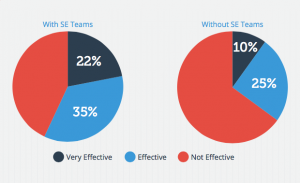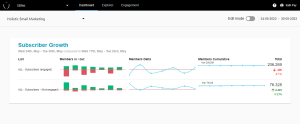
No matter what changes come in the near future, people will still go online to look for the things they need. The only difference is that as time passes, more people are doing this using various mobile devices. If you want to stay competitive, you need to be able to look at the past and the present and anticipate to prepare for the future to ensure you remain one step ahead of your peers.
SEO Evolution in Recent Years
Search engines exist to interpret user queries and offer the most fitting results from all the information on the web. When it comes to local-based businesses (those that rely on clients from around the business location for more than 70% of their revenue), users will be interested in location, operating hours, phone/contact information, driving/public transportation directions as well as a brief overview of the business.
Search engines use algorithms to interpret these queries to sift through possible results to rank them in order of relevance and value. These algorithms undergo continuous tweaking to enable them to better interpret queries and results, in turn providing more value to users.
Search engines look at a number of characteristics and improve their algorithms according to changing consumer needs and behavior. Twenty years ago there were few mobile devices that could access the Internet, hence mobile optimization was not a priority. Today, however, the number of people using their mobile phones for Internet access has surpassed desktop users in many places. This means search algorithms must be adjusted accordingly.
This article provides a few of the most significant trends likely to persist into SEO, with practical tips for business owners and webmasters. If SEO plays a big role for your business, this is possibly the most important information you’ll read this year.
The Future of Web Access is Mobile
In 2014, the number of mobile Google searches exceeded desktop searches in the US. This trend has moved to many other places globally. By 2016, the number of mobile searches globally will exceed desktop search.
As we approach the tipping point – when the largest chunk of marketing budgets go towards mobile optimization for organic traffic and paid search – businesses that haven’t made efforts to improve mobile access will have fewer spots for search results.
Mobile optimization goes beyond making website layouts mobile friendly through responsive design. It’s about shifting your mindset to mobile friendliness and function for all product and/or website-based decisions.
Consider how content will be rendered on a mobile platform for instance; ensure your product and service pages/payouts are legible and accessible through mobile. Optimize your landing pages to offer value for a mobile audience. The idea is that your mobile visitors should have the same quality of experience that you offer desktop visitors.
Go the whole nine yards; rethink your entire marketing strategy to include mobile search, mobile design, mobile advertising, mobile payment channels, mobile CRM, and finally mobile-local-social integration.
Case Study: ZAZZLE
Online retailer Zazzle knew that their on-demand, unique customized products would be a perfect fit for their mobile shoppers. They streamlined and optimized their mobile site to provide a better user experience and increase conversion rates. They integrated mobile considerations into their marketing strategy, built a mobile-optimized site, and implemented Google AdWords.
The result was that as mobile conversions increased by 35% overall, mobile traffic increased by over 100 percent. In addition, revenue from mobile advertising via Google Mobile Ads increased by 296 percent.
Mobile Search and Local Businesses
Research has shown that about 50 percent of local-based consumers will visit a store within 24 hours of their mobile search. In addition, 72 percent of customers who used their smartphones to search for local information will go to stores within a five-mile radius.
Make sure that your business claims a Google+ Local listing as well as other techniques to optimize for local search. Increasing mobile searches will affect local businesses more than hospitality centers (bars, restaurants, clubs, cafes, hotels etc.) and retail stores. Ensure that in addition to your Google+ Local listing, you have full descriptions of products, images, videos, services, operating hours, directions and other relevant information.
The Rise of Google Voice Search
Think about how Google Now, Siri and/or Cortana have made your life different. When there was text-based search only, users tried to type as little content as possible on the search engines. If you wanted a retail store near you, you’d search for that store and then click on one address that was near you. With voice search however, we talk in full sentences “where is the nearest retail store?”
You start by prompting the virtual assistant, like saying “OK Google” for instance. The distinctive thing about voice search is that it relies on the use of question pronouns i.e. who, what, where, how, when, which etc., which will also affect search results served to consumers. Being faster than type search on account of the directness, voice search will soon become more popular than type search.
With Google working on voice recognition features for their apps, businesses will stand to gain if they embrace the significance of these shifts: making content optimized for full sentence queries in conversational language, rather than the short-tail queries that dominated type search.
Improving local SEO is also a great way to ensure relevance in the era of voice search. There must be detailed information about your location, pricing, operating hours, products and services, as well as local citations and reviews which are significant in ranking for local search.
In addition, making apps search friendly is helpful now that app content is being integrated into Google search results. There aren’t many practical tips on voice search given its relative novelty to the SEO scene.
However, the most important takeaway is to develop a balance between SEO, content creation, and marketing – which is a big part of determining search results in the future. With Google’s constant algorithm updates to improve results quality, offering pertinent information on relevant sentence-based and long-tail queries might be the best way to remain at the top come 2016.
Interested in localized marketing? Learn more with our free webinar:
Digital & Social Articles on Business 2 Community
(69)
Report Post






